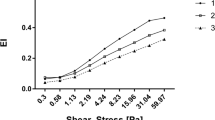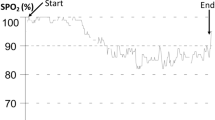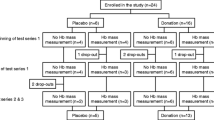Abstract
To examine the hypothesis that foot-strike hemolysis alters vascular volumes and selected hematological properties is trained athletes, we have measured total blood volume (TBV), red cell volume (RCV) and plasma volume (PV) in cyclists (n = 21) and runners (n = 17) and compared them to those of untrained controls (n = 20). TBV (ml · kg−1) was calculated as the sum of RCV (ml · kg−1) and PV (ml · kg−1) obtained using 51Cr and 125I-labelled albumin, respectively. Hematological assessment was carried out using a Coulter counter. Peak aerobic power (V˙O2peak) was measured during progressive exercise to fatigue using both cycle and treadmill ergometry. RCV was 15% higher (P < 0.05) in male cyclists [35.4 (1.0), mean (SE); n = 12] and runners [35.3 (0.98); n=9] compared to the controls [30.7 (0.92); n = 12]. Similar differences existed between the female cyclists [28.2 (2.1); n = 9] and runners [28.4 (1.0); n = 8] compared to the untrained controls [24.9 (1.4); n = 8]. For the male athletes, PV was between 19% (cyclists) and 28% (runners) higher (P < 0.05) in the trained athletes compared to the untrained controls. The differences in PV between the female groups were not significant. Although the males had a higher (P < 0.05) TBV, RCV and PV than the females, no differences between cyclists and runners were found for either gender. Mean cell volume was not different between the athletic groups. V˙O2peak (ml · kg−1 · min−1) was higher (P < 0.05) in both male [68.4 (1.5)] and female [54.8 (2.1)] runners when compared to the untrained males [47.1 (1.0) ] and females [40.5 (2.1)]. Although differences existed between the genders in V˙O2peak for both cyclists and runners, no differences were found between the athletic groups within a gender. Since the vascular volumes were not different between cyclists and runners for either the males or females, foot-strike hemolysis would not appear to have an effect on that parameter. The significant correlations (P < 0.05) found between V˙O2peak and RCV (r = 0.64 and 0.64) and TBV (r = 0.82 and 0.63) for the males and females, respectively, suggests a role for the vascular system in realizing a high aerobic power.
Similar content being viewed by others
Author information
Authors and Affiliations
Additional information
Accepted: 18 September 1998
Rights and permissions
About this article
Cite this article
Green, H., Carter, S., Grant, S. et al. Vascular volumes and hematology in male and female runners and cyclists. Eur J Appl Physiol 79, 244–250 (1999). https://doi.org/10.1007/s004210050502
Issue Date:
DOI: https://doi.org/10.1007/s004210050502




